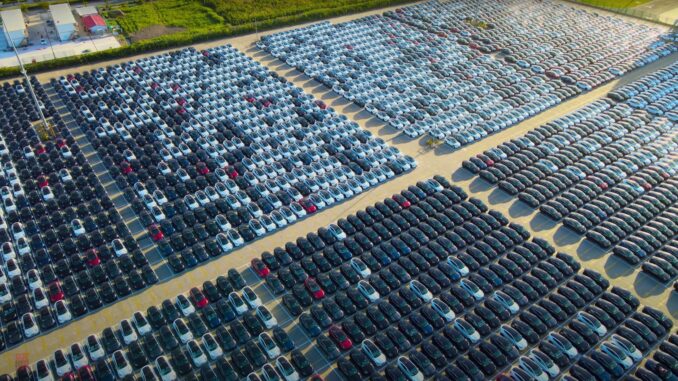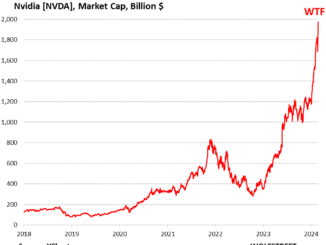
Tesla’s Q3 2025 earnings report, released on October 22, 2025, showcased a mix of triumphs and challenges for the electric vehicle and energy giant. While the company achieved record revenue and strong performance in key areas like vehicle deliveries and energy storage, profitability took a hit amid rising costs, tariffs, and competitive pressures. CEO Elon Musk, during the earnings call, shifted much of the spotlight to Tesla’s ambitious AI-driven future, emphasizing advancements in autonomy, robotics, and AI integration. For investors tuned into the Energy News Beat Channel, this report highlights not just Tesla’s core EV and energy businesses but also how AI could supercharge its role in sustainable energy ecosystems. Here’s a breakdown of the key results, what investors should watch closely, and Musk’s forward-looking “brainstorm” on AI.Q3 2025 Financial HighlightsTesla reported a robust top-line performance, with total revenue hitting a record $28.1 billion, marking a 12% year-over-year increase and surpassing Wall Street estimates of $26.4 billion.
This growth snapped a streak of declines over the past three quarters, driven primarily by automotive sales and a booming energy segment.
Vehicle Deliveries and Automotive Revenue: Tesla delivered 497,000 vehicles, a 7% year-over-year rise and the highest quarterly figure ever.
Automotive revenue climbed 29% sequentially, fueled by launches like the more affordable Model 3 and Model Y variants starting at $36,900 and $39,900, respectively.
Energy Storage Boom: A standout for energy-focused investors, Tesla deployed 12.5 GWh of energy storage—a whopping 81% year-over-year jump—generating $3.4 billion in revenue.
This underscores Tesla’s growing dominance in grid-scale batteries, with new products like the Megablock enabling faster deployments.
Profitability and Margins: Non-GAAP earnings per share (EPS) came in at $0.50, missing expectations of $0.54, while GAAP EPS was $0.39.
Operating profit fell 40%, with gross margins slipping to 18% due to tariffs, higher operational costs, and fading regulatory credits.
Despite this, free cash flow surged 46% to $4 billion, bolstering Tesla’s cash reserves to $41.6 billion.
The stock dipped about 4% in after-hours trading, reflecting investor concerns over the EPS miss and limited near-term sales guidance.
However, the energy division’s momentum signals Tesla’s pivot toward becoming a comprehensive clean energy provider.
What Investors Should Look For
For investors eyeing Tesla amid volatile markets, several metrics and trends from Q3 warrant close attention:
Demand and Growth Trajectory: Watch vehicle order flow and delivery guidance. Musk projected 20-30% vehicle growth in 2025, beating analyst estimates of 16% and signaling a return to expansion after recent softness.
Energy storage could scale to 100 GWh soon, potentially reaching terawatt-hours annually, which is crucial for grid stability and renewable integration.
Margin Pressures and Cost Management: The dip in margins highlights risks from tariffs and competition. Investors should monitor how Tesla navigates these, especially with new models like the three-row Model Y for China and affordable variants boosting accessibility.
Strong cash flow provides a buffer, but sustained profitability will depend on scaling efficiencies.
AI and Autonomy Milestones: Tesla’s AI investments, including 81,000 H100-equivalent GPUs and a new partnership with Samsung for U.S.-made AI chips, are ramping up.
Look for progress on Full Self-Driving (FSD) software—version 13 is imminent, promising 5-6x improvements in miles between interventions.
If unsupervised FSD becomes safer than humans by Q2-Q3 2026, it could unlock massive value in robotaxis.
Regulatory and Competitive Risks: With robotaxi pilots expanding, keep an eye on approvals in key states like Texas and California. Also, Musk’s push for 25% voting control ties into AI governance—without it, he hinted at potentially shifting focus elsewhere, which could impact long-term innovation.
Energy Sector Synergies: Tesla’s Supercharger network grew 18% year-over-year, supporting EV adoption.
Investors in renewables should note how AI optimizes energy storage and grid management, positioning Tesla as a leader in the energy transition.
Overall, while Q3 showed resilience, investors should prioritize Tesla’s execution on AI and energy over short-term EPS fluctuations for long-term upside.
Elon’s AI Brainstorm and Future Statements
Elon Musk used the earnings call to “brainstorm” Tesla’s AI future, framing the company as an AI powerhouse at an “inflection point.”
He emphasized shifting from EVs to AI-driven autonomy and robotics, with bold predictions that could redefine Tesla’s valuation.Robotaxi and Autonomy: Musk announced driverless robotaxis in Austin by year-end 2025, expanding to 8-10 cities by December.
Ride-hailing launches in Texas and California next year, building on a year-long employee pilot in San Francisco.
He envisions millions of autonomous Teslas by mid-2026, with unsupervised FSD rolling out in 2026 and Cybercab production targeting 2 million units annually using revolutionary “unboxed” manufacturing.
Cybercab is positioned as a $25,000 vehicle, and Tesla will offer free hardware upgrades for older models if needed for full FSD.
Optimus and Robotics: Optimus humanoid robots are delayed, with production lines installing now and a Version 3 unveil in Q1 2026.
Musk touted their potential as “incredible surgeons” and beyond, with Cybercab and Semi production starting in 2026.
Broader AI Vision: Musk stressed AI’s role in Tesla’s ecosystem, from optimizing energy storage to enabling robotaxis. He warned that without greater voting control, he might pursue AI and robotics outside Tesla, underscoring the stakes for investors.
Other updates include finalizing the Tesla Roadster design.
These statements paint Tesla as transitioning to an AI-industrial behemoth, with energy and autonomy at the core. However, execution risks remain, as past timelines have slipped.ConclusionTesla’s Q3 2025 earnings reflect a company in flux: strong revenue and energy growth offset by margin squeezes, with Musk’s AI “brainstorm” stealing the show. For energy investors, the surge in storage deployments and AI-optimized grids offer exciting prospects. Long-term holders should focus on AI milestones like FSD and robotaxis, which could drive explosive growth. As Musk put it, Tesla is at an AI inflection point—but delivering on these visions will be key to sustaining investor confidence.
Stay tuned to Energy News Beat for more on how Tesla’s innovations shape the clean energy landscape.
Got Questions on investing in oil and gas?
ENB Top News
ENB
Energy Dashboard
ENB Podcast
ENB Substack








